Guests, 2017 |
|---|
Blue tarps / 200 x 200 x 30 cm / 200 x 100 x 30 cm |
|---|
Exhibition Infiltration, APDV Art Center, invited by Valérie Barot. Apdv - Centre d'art was born of the desire to place artistic action at the heart of social reality, and more specifically within the low-income housing of the RIVP 4001 group located at Porte de Vincennes in Paris. The project consists in reinventing and reinvesting spaces qualified as intermediaries between private and public space, including janitor's lodges. But also courtyards, corridors and gardens... |
|---|
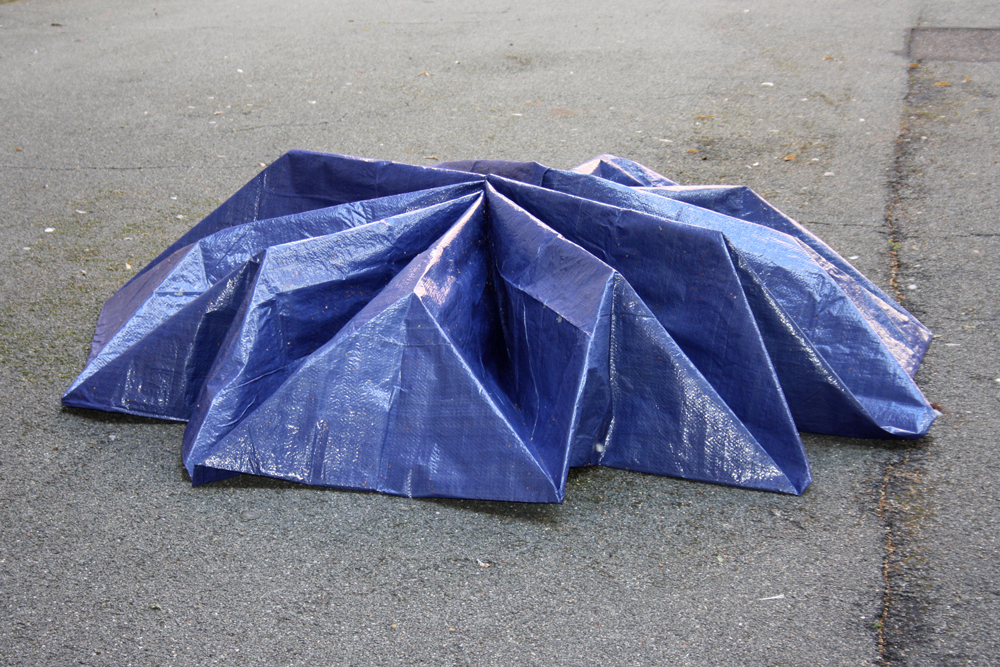
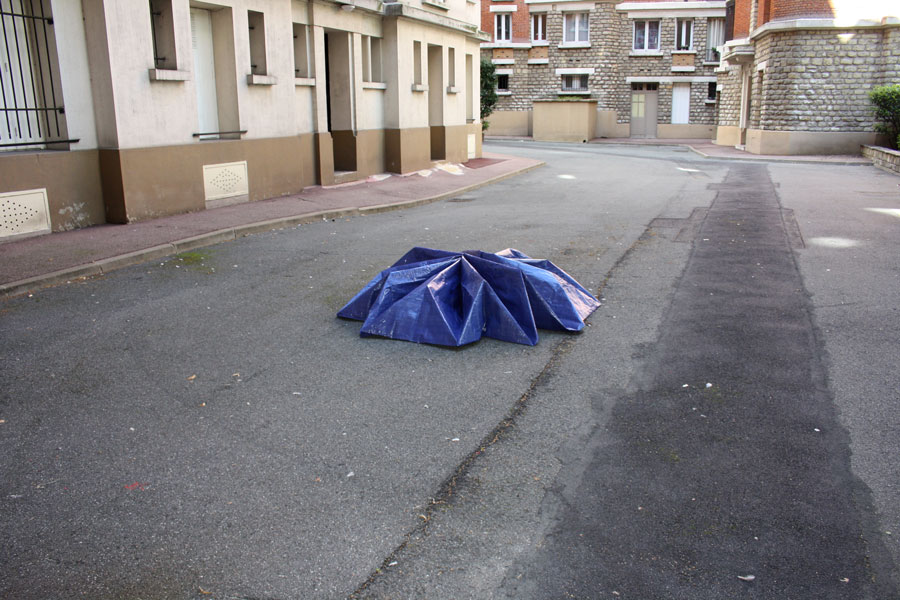
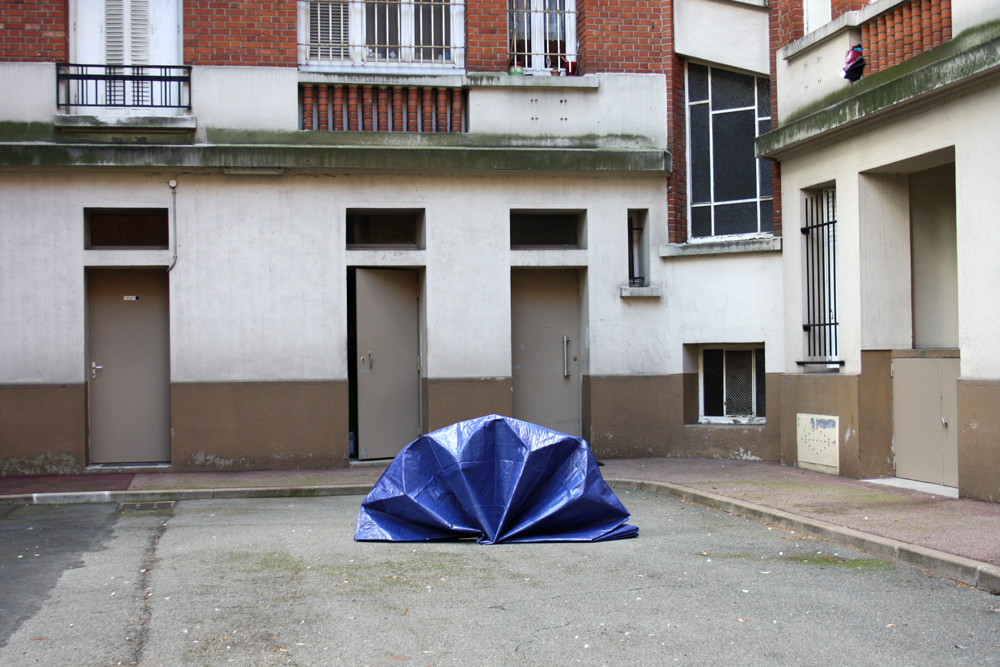
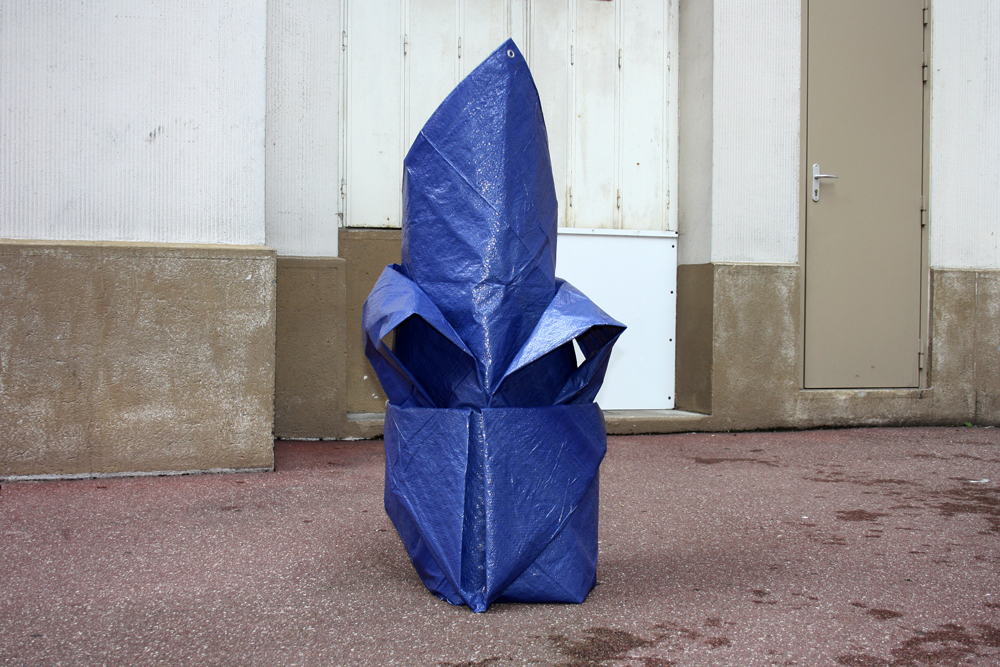

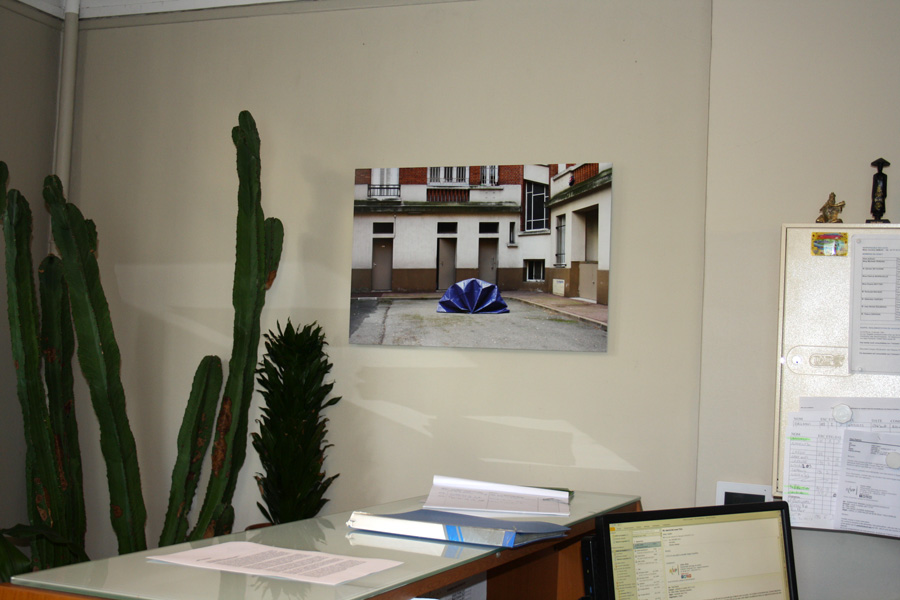
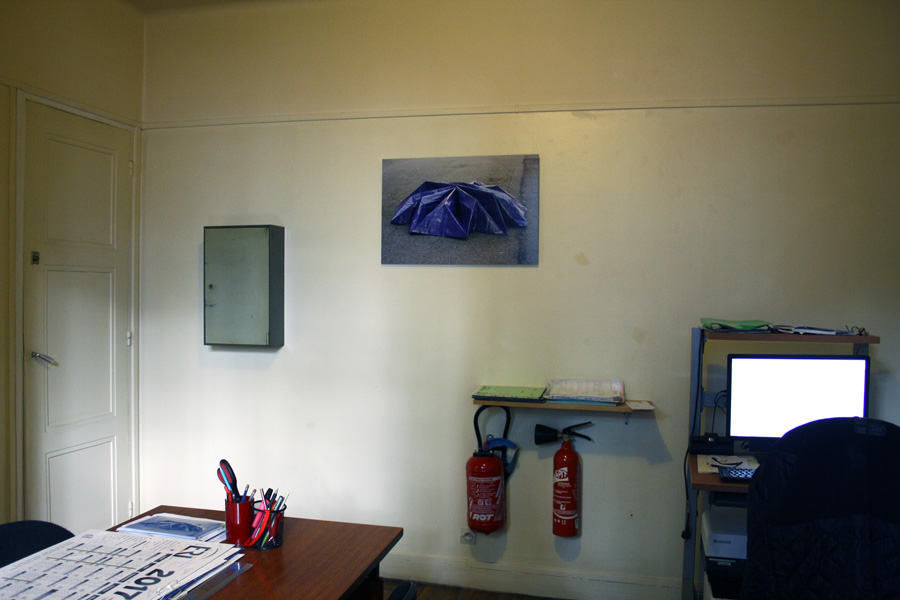
Guillaume Lassere
Curator - Art critic / 2018
Aurélie Slonina, the art of positive infiltration Nominated for the MAIF Prize with “Special Guest”, a sculpture-architecture project that brings together contrary notions to reveal the inconsistencies of our times, Aurélie Slonina continues to infiltrate undesirable elements into urban space. Her hybrid works bear witness to the illusory attempt to masterfully domesticate the living.
Among the five finalists shortlisted by the jury for the eleventh MAIF Sculpture Prize is only one woman, Aurélie Slonina. A discreet artist, for the past twenty years her work has questioned the place occupied by nature in urban spaces by infiltrating “undesirables” into public or private places. In this way, she gives pride of place to what is deliberately hidden or refused to be seen, disrupting man's control over an environment he strives to master. In form and content, his works are the meeting points of two diametrically opposed worlds: one organized and under control, the other anarchic and considered harmful. Like Austrian artist Lois Weinberger, she uses the metaphor of a plant community to reveal human society.She favors “weeds”, which she gives a new status when she presents them in the extremely composed parterres of French gardens. “Special Guest” is an opportunity to revisit the committed work of the artist, who has returned to the Paris region, where she now lives and works after several stays in Berlin and several years in Los Angeles. Two cities, two cultures, whose influence can be seen in her work. Art and nature, present on every street corner in the German capital, reinforce her taste for the study of urban vegetation evolving under surveillance. In California, she experienced the desert and the light, and felt the immensity of the spaces in the City of Angels. Her sense of infinity gave her a new approach to space. This city of the future, already obsolete, exudes an ordinary strangeness that gives the impression that anything is possible.
Hybridizing opposing notions
A project for a bronze sculpture, “Special guest” is a continuation of Aurélie Slonina's work, which, by showing what we don't want to see, underlines the ambivalence of an era that is, to say the least, contradictory in its management of life and its flows. Here, she reveals a lasting provisionality by choosing to use a robust material to represent the fragility of the folds of a giant origami made from blue plastic sheeting, now a symbol of the precarious housing of migrants. A commonplace witness to the scale of the humanitarian crisis unfolding here and now, this ordinary piece of plastic multiplies with each new arrival to become omnipresent in our urban space. This tragic allegory of emergency and distress becomes part of our daily lives as the temporary becomes constant. To physically embody this perpetuity of precariousness, the artist brings together the two contradictory notions in a plastic fusion. Aurélie Slonina composes hybrid works generated by the fusion of opposites, metaphorical representations of the world's dissonances. The disquiet caused here is reinforced by a plural interpretation of the material.While the solid quality of the bronze contradicts the lightness of the tarpaulin to make tangible the effect of a temporary that lasts, on the other hand, it ennobles the poverty of the plastic. The precious alloy of copper and tin, traditionally reserved for the representation of elites and kings, imposes a magnified image of migrants. The solemn brilliance of brass erases the prejudices that stigmatize these populations. In this way, Aurélie Slonina shifts the way we look at others, those who are different. The makeshift habitat embodied by the blue plastic tarpaulin is transformed into a poetic object under the folds of the Japanese art of origami. Let's make no mistake about it: although at first glance it may seem weighty and playful, Aurélie Slonina's sensitive art uses plastic form to make a political statement.
A graduate of the Ecole nationale supérieure de Paris-Cergy in 1996, she has made nature the main focus of her research. Far from proposing a bucolic image of wild landscapes, she depicts nature as urban, in other words, captive, controlled and artificial. The nature that interests her is that of cities, a nature hybridized by the will of men who place it under surveillance. In Aurélie Slonina's work, nature takes the form of organic flying saucers, graffiti planters and video game landscapes, testifying to the ambiguous relationship we have with our natural environment. However, there's no question of returning to the concept of a mythical land before mankind. For the artist, there is no original Eden.
His art documents with the utmost precision man's actions in transforming nature in an urban context, taming it in the city. Nature, simulated as it is in green spaces, is obliged to mutate in order to meet the common (and therefore artificial) constraints of city organization and operation. However, a totally domesticated nature, entirely under control, is nothing but an illusion. Weeds grow under concrete. Considered a nuisance, kept at a safe distance for fear of anarchy and chaos, they nevertheless prove untamable, growing proudly in the cracks of the concrete slabs, as if to assert their existence and their right to be different. The troubling parallel with human society invites us to reconsider our relationship with the other, “undesirable” in our environment because they are different, just as weeds are in a controlled urban vegetation space. Aurélie Slonina's art allows the presence of outcasts where they are precisely forbidden:ruderal plants responding to the geometric rigor of a French garden based on a plan by Le Nôtre (“Friche à la française”, plant installation, 2009-12), nettles delimiting a labyrinth - a symbol of discipline through mastery of the game - in a public garden (“Labyrinthe”, plant installation, 2010), images of forests planted by man that follow one another in a video whose jerky editing disturbs this harmony, reminding us of its artifice (“Flying saucer”, video, 2014), plants colonizing a basket and various other objects, ephemeral witnesses of a life prior to an ecological catastrophe, porcelain works whose fragile preciousness contradicts the dilapidated state of these elements left to decay (“Sunrise”, glazed porcelain, 2015).